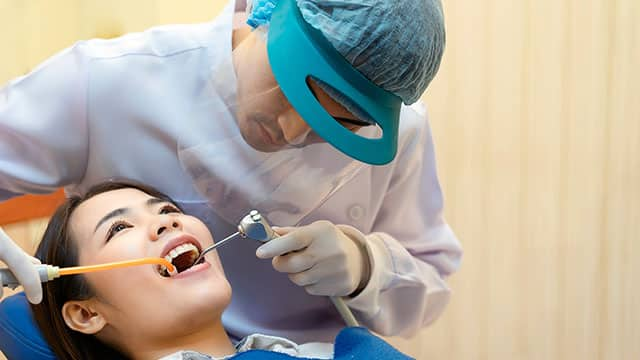What to Expect After a Filling
The goal of a filling is to repair the damage caused by tooth decay. Although a dental filling should help to fix your problem, you might notice a bit of sensitivity immediately following the treatment. The Cleveland Clinic notes that this tooth sensitivity is common after fillings and that it usually resolves on its own after a couple of weeks.
There are some cases when people do feel tooth pain or pain in the area surrounding their tooth after getting a filling. As the Cleveland Clinic points out, tooth pain after a filling can be a sign that the filling is affecting your bite or that the decay was severe enough to require more extensive treatment, such as a root canal. If that's the case, you might want to see your dentist to discuss your options.
Possible Causes of Jaw Pain After a Filling
What if you don't have tooth sensitivity or a toothache-type pain after a filling but instead have pain in your jaw? In some cases, the tenderness might be a side effect of having a dentist working in your mouth. Simply keeping your mouth open for an extended period can cause your jaw to become sore. In some cases, keeping your mouth open as your dentist works can contribute to trismus, or "lockjaw," as the Canadian Dental Association (CDA) notes, which is a condition that makes it difficult to open your mouth fully.
In certain instances, jaw pain might develop because of a problem with the filling or another issue in the mouth. A case report published in the European Journal of General Dentistry describes how one woman developed jaw pain after a restoration, suggesting that the restoration she received was "jagged," which might have contributed to her pain. She also had signs of inflammation in the gums, which may have played a role, too. Smoothing and reshaping the filling helped to reduce her pain.
How to Get Relief From Jaw Pain
It might be a relief to know that jaw pain after a filling usually resolves itself quickly. But what if you want relief from your pain now, rather than in a couple of weeks? There are a few things you can do.
If you're experiencing lockjaw, StatPearls suggests applying heat to the jaw area, or try gentle stretching exercises. Talk to your dentist to learn more about how to perform the exercises.
Ibuprofen and other analgesics may also help to minimize your jaw pain, according to the CDA. Talk to your dentist or doctor before trying them to be sure that you get the dose right and that the pain relievers won't interfere with any other medication you're taking. If ibuprofen or similar medication doesn't help, your dentist or doctor might prescribe a muscle relaxant to ease the pain.
When to See a Dentist About Jaw Pain
Any sensitivity or discomfort you feel after a filling should let up after a couple of weeks. If more than two weeks have passed and you're still noticing that your jaw hurts, it's a good idea to schedule a follow-up visit with your dentist. During your visit, they can inspect your mouth and look for potential causes of your jaw pain, such as inflammation in the gums or a rough-edged filling.
Together, you and your dentist can discover the cause of your continued jaw pain and can discuss what you can do to alleviate it.
Oral Care Center articles are reviewed by an oral health medical professional. This information is for educational purposes only. This content is not intended to be a substitute for professional medical advice, diagnosis or treatment. Always seek the advice of your dentist, physician or other qualified healthcare provider.
ORAL HEALTH QUIZ
What's behind your smile?
Take our Oral Health assessment to get the most from your oral care routine
ORAL HEALTH QUIZ
What's behind your smile?
Take our Oral Health assessment to get the most from your oral care routine















